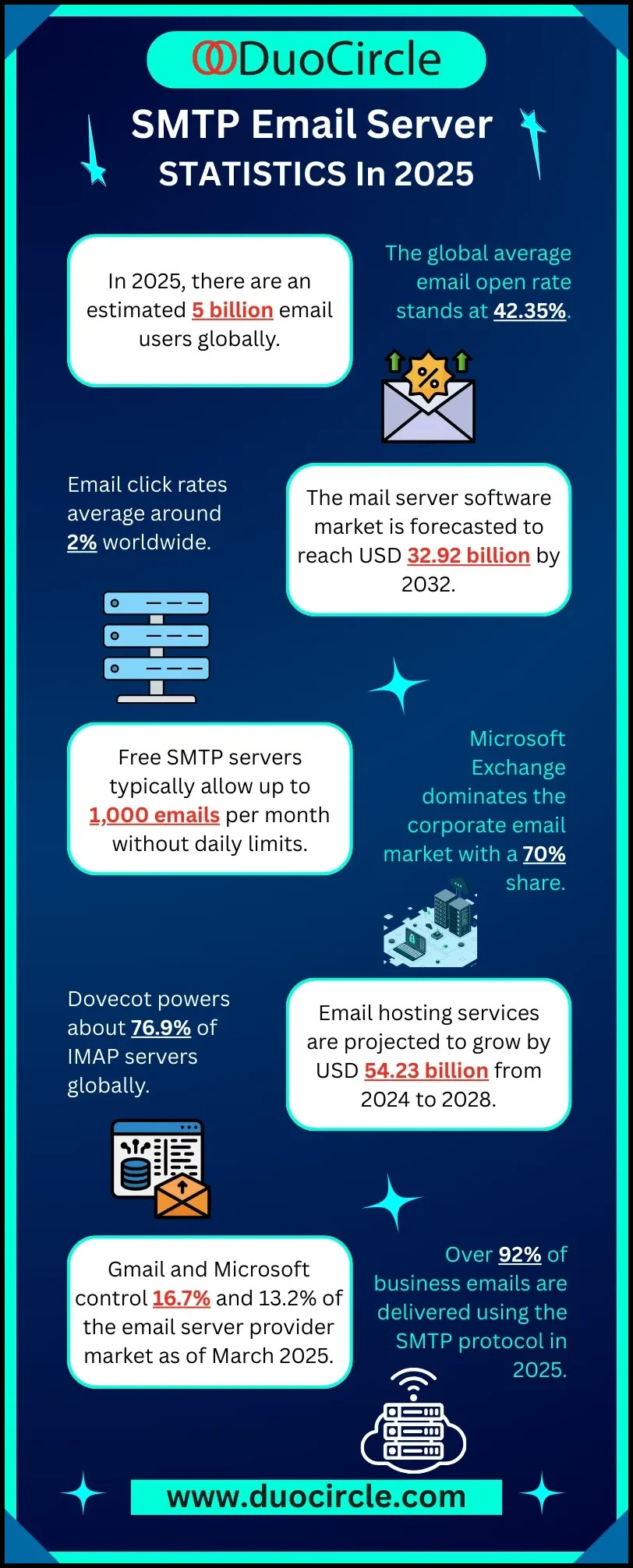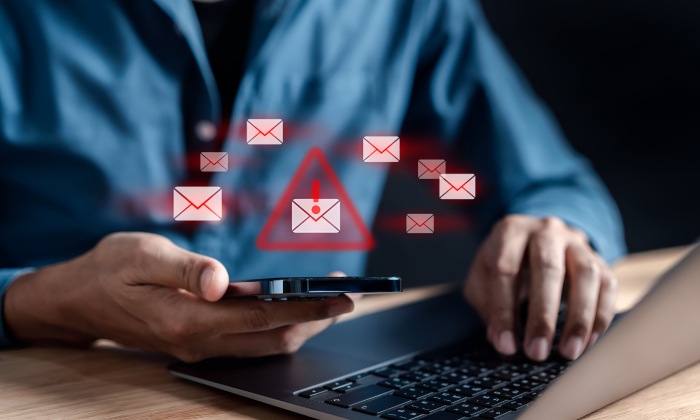An SMTP open relay is a mail server configuration that allows users to send emails through the server without authentication, making it vulnerable to exploitation by spammers for sending unsolicited emails. This practice not only leads to increased spam activity but can also compromise the server’s reputation and deliverability rates, necessitating robust security measures to prevent unauthorized access.
SMTP Open Relay Explained
At its core, an SMTP open relay allows anyone on the internet to send email messages through your mail server without needing any authentication. Imagine if you lived in a neighborhood where anyone could just walk into your home and use your phone to make calls; that’s what an open relay does to your email system.
This configuration became quite common when email systems first emerged, as it made sending emails simple and user-friendly. However, this convenience quickly turned into a nightmare as spammers exploited these settings to flood inboxes with unsolicited messages.
When a mail server is set to operate as an open relay, it lifts all barriers typically restricting access to authenticated users. This lack of verification means unauthorized individuals can misuse your server to send out vast volumes of spam or phishing emails disguised as legitimate correspondence from your organization. As a result, malicious actors damage not only your domain’s reputation but also expose your mail server to potential legal ramifications should any abuse lead to significant fallout, such as data breaches or phishing scams.
The repercussions of being identified as an open relay can be severe: your IP address can get blacklisted, significantly impacting email deliverability.
To illustrate the risks associated with misconfigured SMTP servers, it’s worth noting that many cybercriminals employ techniques like address spoofing. This practice involves sending emails under the guise of trusted domains while bypassing usual security measures. Imagine someone pretending to be your neighbor, using your phone without permission—this nefarious practice undermines trust in email communications while posing a direct threat to security.
As we consider these vulnerabilities, it’s essential to examine the preventive measures available to mitigate these risks and secure our SMTP servers effectively.
Understanding Open Relay Configuration
The crux of the problem lies in how these open relay configurations are established. Often due to oversight or lack of knowledge, administrators may leave default settings unchanged; they fail to restrict which IP addresses are permitted to relay emails through their servers. This negligence creates an avenue for hackers who perpetually scan networks for weakly configured servers ready for exploitation.
It’s a bit like leaving your front door unlocked when you’re not home—an invitation for trouble you simply don’t want!
A key element in understanding this risk is recognizing how easily mail servers can leak sensitive information due to improper configurations. A well-intentioned decision aimed at streamlining communication can turn into a liability when security isn’t prioritized during setup. Proper functioning requires safeguards: implementing strict access controls and ensuring email senders are authenticated before using the server for relaying messages.
This brings us closer to understanding the broader implications of security measures necessary for safeguarding digital communications against ever-evolving threats.
Security Concerns and Risks
Open relay servers create a breeding ground for potential security breaches that can have far-reaching consequences. One of the most significant risks is address spoofing, where spammers exploit these vulnerabilities to send massive volumes of unsolicited emails while impersonating legitimate addresses. This not only clogs your server but also damages the reputation of your domain, making it appear untrustworthy. Imagine checking your inbox only to find hundreds of spam messages masquerading as crucial communications from your organization.
Approximately 85% of all email traffic today comprises spam, with a substantial portion stemming from poorly configured open relay servers. For organizations that rely heavily on email for communication, this can be a nightmare scenario.
Moreover, the decline in the number of open relays—from over 90% in the mid-1990s to less than 1% today—highlights how critical regular security measures have become in combating these threats. However, merely having fewer open relays doesn’t guarantee safety. Misconfigured SMTP servers still remain vulnerable to exploitation by malicious actors eager to bypass security protocols.
The potential for data leakage is another serious risk associated with open relays.
When misconfigured, SMTP servers may inadvertently enable unauthorized relaying of sensitive email content, leading to significant data breaches. Hackers can hijack trusted domains to craft phishing emails designed to deceive recipients, often resulting in unauthorized data access or financial loss. Unfortunately, human error remains a predominant factor in IT configuration, and statistics show it continues to be a weak link in security measures.
Picture this: an attacker gains access to an open relay and impersonates a company’s CEO, sending fraudulent payment requests to unsuspecting employees. This kind of manipulation underlines the necessity for robust safeguards when handling email transactions.
Proactively addressing these concerns can help mitigate risks.
Implementing effective strategies such as restricting access to local IP addresses and requiring strong authentication for remote users are essential prevention techniques. Additionally, regular audits should be conducted to identify vulnerabilities in SMTP configurations before they can be exploited. These practices not only secure data but also enhance trustworthiness among customers and stakeholders alike.
By taking these steps seriously, businesses can avoid becoming part of the growing list of compromised organizations while preserving their reputation amid increasing digital threats.
Having identified and addressed the prevalent threats posed by open relays, we can now shift our focus to the essential practices for securing your email systems effectively.
Configuring Your SMTP Server
Proper configuration of your SMTP server begins with recognizing that neglecting security settings can lead to dire consequences. If a rogue user finds their way into your system, they can misuse it for nefarious purposes, such as sending spam or phishing emails. Thus, the first step in effectively configuring your server is to restrict relay access. This means only allowing known IP addresses to relay messages through your server. Any attempts from unknown or unapproved IPs should be automatically denied. It’s like ensuring only trusted guests can enter your home; this simple measure significantly cuts down on potential risks.
Next on our configuration journey is requiring authentication before sending emails. Think of this as checking ID at the door. By implementing protocols like SMTP-AUTH, every user must provide credentials before they can send emails through the server. This not only proves the identity of each sender but also helps prevent unauthorized users from exploiting your server for spam or other malicious intent.
The third vital step involves applying security patches regularly. As technology evolves, new threats emerge, and software developers promptly release updates to counteract these vulnerabilities. Regular updates not only enhance functionality but also serve as a critical line of defense against emerging threats. Imagine it as a routine maintenance check-up for your vehicle: by staying updated on maintenance, you ensure better performance and safeguard against potential breakdowns.
| Configuration Step | Description |
| Restrict Relay Access | Limit email relay to known IPs |
| Require Authentication | Ensure all users authenticate before sending emails |
| Apply Security Patches | Regularly update email server software to close vulnerabilities |
With these foundational steps in place, you’ll be better prepared to defend against potential exploits. However, securing your environment requires ongoing vigilance and regular audits to maintain protection against evolving threats. Moving forward, we will explore various methods to uncover existing vulnerabilities in your setup.
Tools to Identify Vulnerabilities
When it comes to securing your SMTP server from open relay vulnerabilities, selecting the right tools is crucial. These tools assist in pinpointing weaknesses and serve as a foundation for improving your server’s overall security posture. For instance, Mxtoolbox stands out as an invaluable resource. This free tool scans your server for various issues, particularly focusing on open relay problems that could expose you to spamming and phishing attacks.
Using Mxtoolbox is straightforward; simply enter your domain, and within moments, you receive detailed feedback regarding any potential vulnerabilities. It’s like having a flashlight in a dark room—you can see where the pitfalls may lie before stepping into danger.
Another excellent tool is the Open Relay Test Tool, specifically designed to probe your SMTP server rigorously. It tests whether unauthenticated users can send emails through your server without restrictions. This tool effectively exposes risks that might go unnoticed during routine checks, ensuring that your email communications remain secure from unwanted intrusions.
Now that we’ve examined specific tools, let’s discuss how Nmap, a powerful network scanning utility, fits into the picture.
Nmap, short for Network Mapper, uses scripts aimed at identifying vulnerabilities in your SMTP configuration efficiently. By utilizing Nmap scripts tailored to SMTP servers, such as smtp-open-relay, you can conduct comprehensive scans that reveal hidden security flaws in your setup. Leveraging commands like nmap -sC -sV -p- -T4 [your_domain] allows you to quickly check running services, confirm their versions, and scan all ports. Each of these steps provides further layers of insight into your system’s integrity.
What’s vital here is not just identifying vulnerabilities but also implementing best practices based on the insights gained from these tools.
After establishing which vulnerabilities exist using these reliable tools, organizations must weave this knowledge into their operational fabric by adopting rigorous maintenance protocols. Regular testing ensures that servers are secured against newly discovered exploits—remember that zero-day vulnerabilities can impact even the most seemingly fortified systems! Each layer of security corresponds with procedural diligence; hence integrating regular vulnerability assessments into your schedule doesn’t just protect you but also enhances the credibility of your organization.
Utilizing comprehensive tools for vulnerability discovery equips you with the necessary knowledge to safeguard your infrastructure effectively and proactively against attacks while ensuring seamless email operations.
With a solid understanding of the tools available, we can now shift our focus toward practical approaches that help reinforce security measures effectively.
Implementing Best Practices
Implementing industry best practices can significantly enhance your defenses against open relay vulnerabilities. It’s not just about following guidelines; it’s about actively engaging in a protective strategy that keeps both your communications secure and your organization’s credibility intact.
Best Practices to Follow
First and foremost, consider utilizing DNSBL (Domain Name System-based Blackhole Lists). This method is invaluable as it allows you to easily block known spammers from reaching your email server. Think of DNSBLs as having a well-informed guard at your gates who automatically denies entry to anyone on the blacklist, safeguarding your digital domain from unwanted intrusions. The effectiveness of this practice cannot be overstated, as countless organizations have observed a dramatic decrease in spam-related issues after deploying DNSBLs.
Another key element is to adopt encryption protocols like TLS (Transport Layer Security). In an age where sensitive information can be intercepted by malicious actors, securing email transmissions through encryption acts as a robust shield. By implementing TLS, you provide a safe passage for your emails and maintain confidentiality during transmission. Picture sending a letter locked inside a strongbox rather than in an unsealed envelope, ensuring that the contents remain private even if the letter is intercepted during its journey.
Additionally, enabling DKIM (DomainKeys Identified Mail) and SPF (Sender Policy Framework) should be non-negotiable practices for any organization serious about email authenticity. DKIM helps ensure that the message content is intact and hasn’t been altered in transit, while SPF specifies which mail servers are authorized to send emails on behalf of your domain. Employing these technologies is akin to giving your emails a trustworthy stamp of approval, making them less susceptible to being spoofed or marked as spam by recipient servers.
By following these steps—utilizing DNSBLs, adopting encryption protocols, and enabling DKIM along with SPF—you can significantly reduce the risk of your mail server being compromised. However, real-world applications show us how vital these practices are for success.
For instance, many organizations that neglected these measures found themselves victims of email spoofing attacks, resulting in financial losses and damaged reputations. In contrast, those that made the investment into secure configurations saw reduced incidences of unauthorized access and maintained the trust of their clients and stakeholders. Protecting your email ecosystem isn’t merely an IT task; it’s crucial for preserving the integrity of your business operations.
Having established these crucial best practices, it’s essential to examine examples that demonstrate their significance in defending against vulnerabilities.
Real-World Examples and Lessons
Examining real-world scenarios where open relays were exploited provides critical lessons for anyone managing an SMTP server. One striking instance occurred in 2017 when a company’s open relay was abused to send millions of spam emails impersonating a high-profile CEO. This incident didn’t just create a nuisance; it bore significant repercussions: the company faced severe reputational damage, lost customer trust, and endured substantial financial losses related to damages and recovery.
The fallout from pretending to be an important figure serves as a stark reminder of the need for strong authentication measures; without them, any SMTP server can quickly become a launchpad for malicious activities.
As we examine further examples, vigilance in maintaining server integrity becomes more evident.
In another case involving a nonprofit organization, an open relay misuse facilitated phishing attacks aimed at stealing donor information. The breach was traced back to neglected software updates that left the server vulnerable—an issue that many organizations overlook at their peril. Regular audits and timely updates are imperative for maintaining a secure email server environment.
This situation signifies that technology carries risks if proper preventive measures aren’t taken. For your servers, ensure that security patches are applied promptly, and regularly scheduled audits meticulously examine configurations. Keeping software up-to-date is often viewed as repetitive or tedious; however, its importance cannot be overstated—it is the backbone of a stable and secure operational environment.
Here’s what both cases underscore about SMTP server management:
- Enforce strict authentication protocols to deter impersonation attempts.
- Conduct frequent software updates to close exploitable vulnerabilities.
- Implement regular audits to ensure compliance with security best practices.
By learning from these examples, organizations can proactively secure their SMTP servers, ensuring they serve their intended purpose without becoming liabilities.
Ultimately, these instances serve as cautionary tales—highlighting not only the risks of improper SMTP configurations but also emphasizing how proactive measures can enhance security and restore trust in email systems. By leveraging DuoCircle’s advanced email security solutions, organizations can effectively mitigate risks, strengthen their SMTP configurations, and ensure more secure communications.



